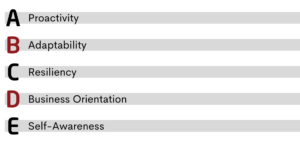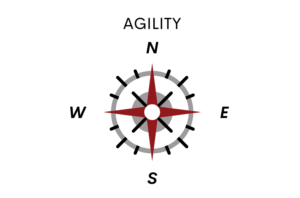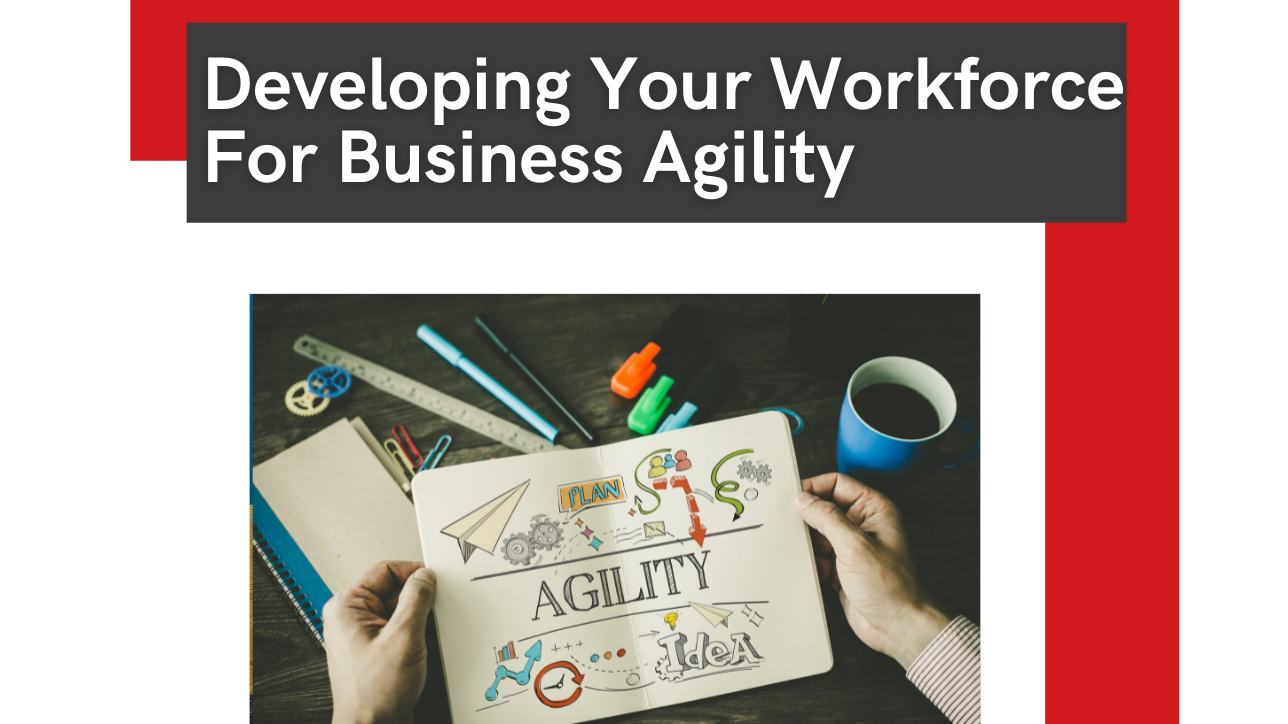5 minute read
Takeaway: Organizational agility is an outcome that can be designed into an organization’s operating model. An agile workforce is also a result of design decisions. Always begin with the end in mind.
HR is well positioned to promote business agility through workforce development. The term agility describes an organization’s ability to continually identify and adapt to changing circumstances. It is powered by people with capacity to make change routine through operational systems and behaviors that settle deeply into the culture of an organization. Agility is an outcome of deliberate design decisions across the entire operating model.
When HR drives toward this outcome it will lead a shift toward an innovative and adaptive culture. It will also increase the strategic influence of HR as it takes powerful, visible, and strategy-led actions toward ensuring the long-term well-being of the company.
An Agile Workforce
What does it mean to develop an agile workforce? Answering this question first requires understanding the agile organization. Here are several characteristics that are generally agreed upon: 
- Strategic Awareness – Capability to identify opportunities and threats in the market faster than competition and use this awareness to reshape strategic intent.
- Reconfigurability – Capability to quickly redirect resources to act on strategic opportunity.
- Organizational Learning – Capability and willingness to learn from experience, observation, and testing.
- Flawless Execution – Capability to reliably execute both the basic and more advanced aspects of running the business.
- Agile Workforce – Capability to thrive in ambiguity and deliver the right skills at the right time.
The common thread is capability. Business agility is an outcome that can be designed into an organization’s operating model. An agile workforce is also a result of design decisions. If you begin with the end in mind, here is a core list of five human characteristics you will want to develop:
- Proactivity – The ability to anticipate future needs and pursue them through personal initiative
- Adaptability – Behavioral flexibility, learning orientation, and ability to collaborate
- Resiliency – Positive attitude toward change, tolerance of ambiguity, and stress management
- Business Orientation – Knowledge of an organization’s environment, operations, and goals
- Self-Awareness – Objective assessment of self and impact on others and receptive to feedback
An assessment of the common methods HR professionals may use to promote these characteristics is found in the following list. It is not proposed as exhaustive or even what will work best in your organization. 
While none of the above items is likely to be a surprise to the reader, the collective and reinforcing power of the list might strike you.
Key Challenges to the Development of an Agile Workforce
Research among HR professionals has identified several reasons organizations find it difficult to develop an agile workforce. These hindrances include:
- Lack of Strategic Clarity – Strategy that is not clear and does not identify organization agility as a desired capability.
- Lack of Leadership – Leaders who do not have the foresight or take the personal and organizational steps to create an environment that promotes an agile workforce.
- Resistance to Change – People who are insulated from the operating environment and a culture that overvalues stability and resists change.
The common thread here is the lack of systemic promotion of human agility. It is possible for HR to work bottom-up to develop an agile workforce. But without strong horizontal alignment among leaders, a programmatic approach emerging from an HR function is unlikely to be sustainable. A much more powerful approach is for HR to lead the organization to articulate workforce agility as a desired social attribute in its business direction during a strategic operating model assessment.
The Operating Model as a Comprehensive Integrating Mechanism
HR must influence and leverage the organization’s operating model if it wants to build a systemic and sustainable approach to workforce agility. Functional initiatives and programs will never out-influence the power of the operating model and the culture it creates. To begin, the operating model must expressly articulate organization agility in its business direction. Codifying agility into Business Direction is the maximum point of leverage.
Throughout the operating model design process, HR leaders can influence design criteria, the shape and structure of the organization, management mechanisms and systems, formal and informal reward and recognition practices, and people processes. The latter two domains are particularly open to influence by HR.
The operating model redesign process itself is also a powerful tool to promote an agile workforce. There is no better way to develop business orientation than involving employees in the design of their own organization. End-to-end visibility of the full value stream; the removal of functional blinders; the development of solid social networks; and collaborative decision making – participation in the design process produces these outcomes and promotes workforce agility.
HR on the Frontlines of Business Agility
The long-term viability of any organization is based on its ability to maintain relevancy in a changing market. Powerful HR leadership toward this end must be integrated with organizational strategy and the operating model. When these conditions are met, HR can make great contributions and lead the development of the human determinants needed to achieve organization agility.
As an HR leader, make agility part of your North Star constellation. 
See your organization as a dynamic, changeable system that must continuously learn and adapt to maintain its fit with the market. Share this vision with other leaders. Influence the development of strategy so that attention and resources may be directed toward the development of the necessary human characteristics. Work through the operating model. Do this and HR’s seat at the strategic table is ensured for the life of the organization.
Let’s Talk!
Source note: Virchez, A., A Human Resource Perspective on the Development of Workforce Agility, 2015
Dan Schmitz is a Consultant at ON THE MARK. OTM’s experience and passion for collaborative business transformation that’s supported by pragmatism, systems thinking, and a belief in people is unparalleled. OTM has been in business for 35 years and is a leading organization design firm.






